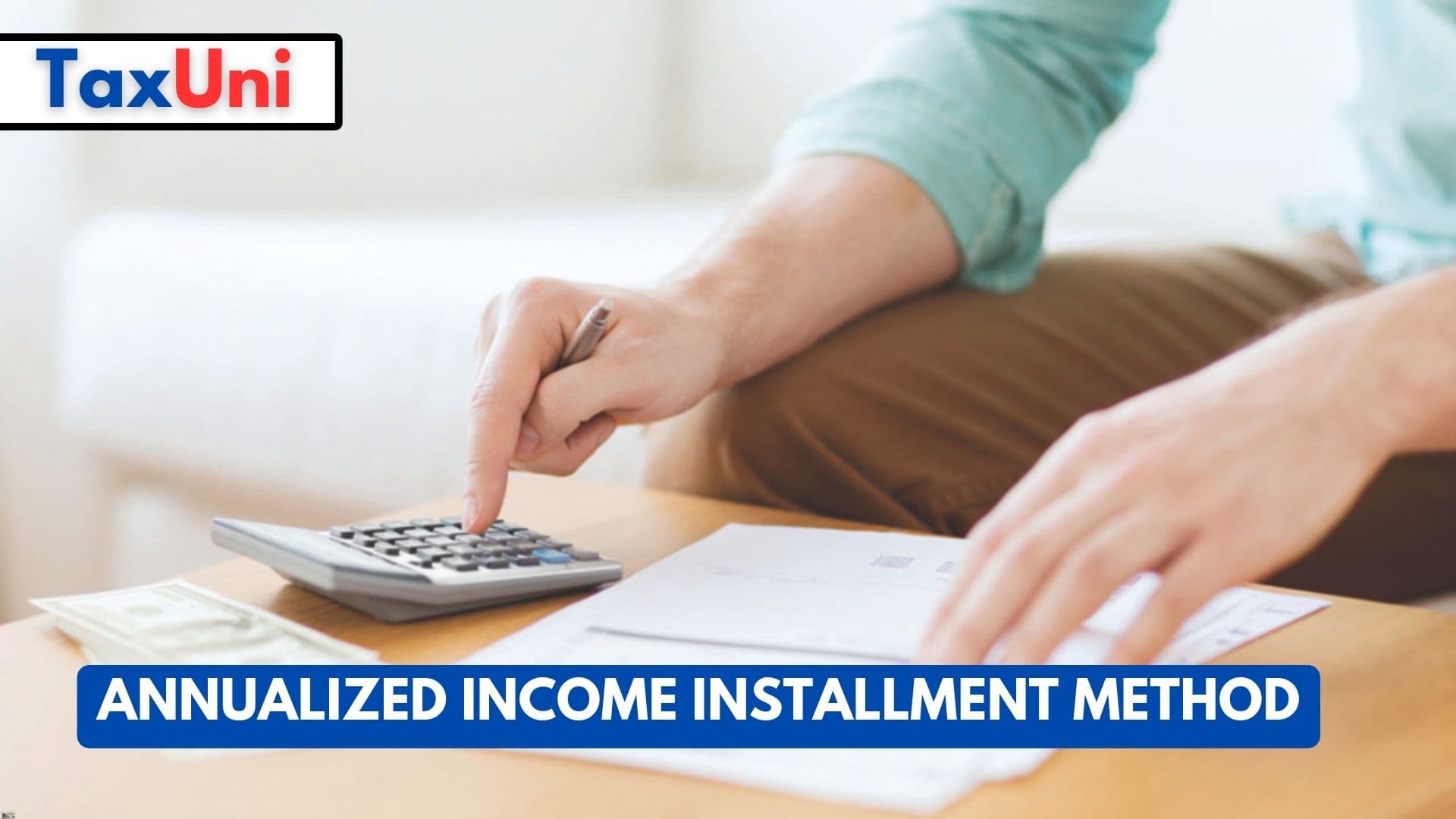Annualized Income Installment Method
Enter the annualized income installment method, a game-changer for taxpayers seeking to align their estimated tax payments with actual earnings, ensuring smoother financial sailing throughout the year.

Contents
The annualized income installment method is a strategic approach designed for individuals whose income doesn’t follow a predictable pattern—think freelancers, seasonal workers, or entrepreneurs with variable revenue streams. Traditional tax systems often expect taxpayers to make equal quarterly payments, assuming a steady income year-round. However, for those whose earnings ebb and flow, this can lead to overpayment during lean months or underpayment penalties during prosperous periods. By adopting the annualized income installment method, taxpayers can calculate their estimated tax payments based on actual income earned during specific periods, resulting in payments that mirror their financial reality. This method not only aids in managing cash flow but also minimizes the risk of incurring underpayment penalties due to uneven income distribution.
How the Annualized Income Installment Method Works
Unlike the standard approach, which divides the annual estimated tax into four equal installments, the annualized income installment method adjusts each payment to reflect the income earned in the corresponding period. The IRS divides the tax year into four payment periods:
- January 1 – March 31
- April 1 – May 31
- June 1 – August 31
- September 1 – December 31
For each period, taxpayers calculate their cumulative income and deductions, annualize that amount to project the year’s income, and then determine the tax due. This process ensures that each installment payment is proportionate to the income earned during that timeframe. For instance, if a taxpayer earns the majority of their income during the summer months, their tax payments during those periods will be higher, aligning with their increased earning capacity.

Benefits of Using the Annualized Income Installment Method
- Flexibility for Variable Incomes: Ideal for those with seasonal or fluctuating earnings, allowing tax payments to correspond with actual income.
- Avoidance of Underpayment Penalties: By aligning payments with income, taxpayers reduce the risk of penalties associated with underpayment during high-earning periods.
- Improved Cash Flow Management: Ensures that tax payments are manageable during lower-income periods, aiding in overall financial planning.
- Accurate Reflection of Tax Liability: Payments are based on real-time earnings, providing a more precise approach to meeting tax obligations.
Implementing the Annualized Income Installment Method
To utilize this method, taxpayers should complete Schedule AI of IRS Form 2210, titled “Underpayment of Estimated Tax by Individuals, Estates, and Trusts.” This schedule guides users through the process of annualizing income for each period and calculating the corresponding tax liability. It’s essential to maintain detailed records of income and expenses throughout the year to ensure accurate calculations. While the process may seem complex, especially for those unfamiliar with tax computations, consulting with a tax professional or utilizing reputable tax software can simplify implementation.
Considerations and Best Practices
- Timeliness: Even when using the annualized income installment method, it’s crucial to adhere to the standard payment due dates to avoid late payment penalties.
- Documentation: Keep meticulous records of all income and deductible expenses, as accurate data is vital for correct tax calculations.
- Professional Guidance: Given the intricacies of tax laws and the potential for changes, seeking advice from a tax professional can ensure compliance and optimize tax strategies.

FAQs
Q: Who should consider using the annualized income installment method?
A: Individuals with fluctuating or seasonal incomes, such as freelancers, self-employed professionals, and seasonal workers, may benefit from this method to align tax payments with actual earnings.
Q: Does using this method change the tax payment due dates?
A: No, the due dates remain the same: April 15, June 15, September 15, and January 15 of the following year. The method adjusts the payment amounts, not the deadlines.
Q: Is it mandatory to use the annualized income installment method if I have variable income?
A: No, it’s optional. Taxpayers can choose this method if it better suits their financial situation, but they can also stick with the standard installment method if preferred.
Q: Will I need to file additional forms if I use this method?
A: Yes, you’ll need to complete Schedule AI of IRS Form 2210 and submit it with your annual tax return.
Q: Can this method help me avoid underpayment penalties?
A: Yes, by aligning your tax payments with your actual income, you reduce the risk of underpaying during higher-earning periods, thereby minimizing potential penalties.





